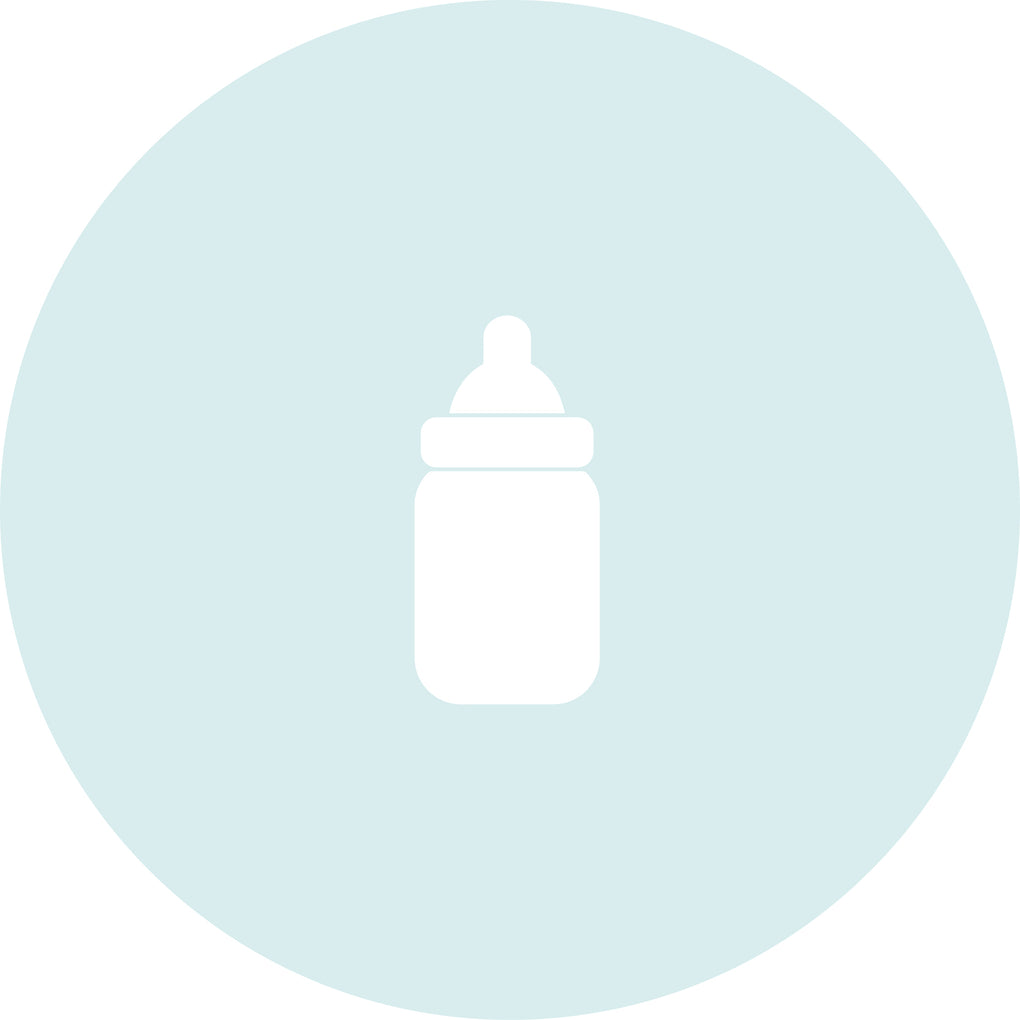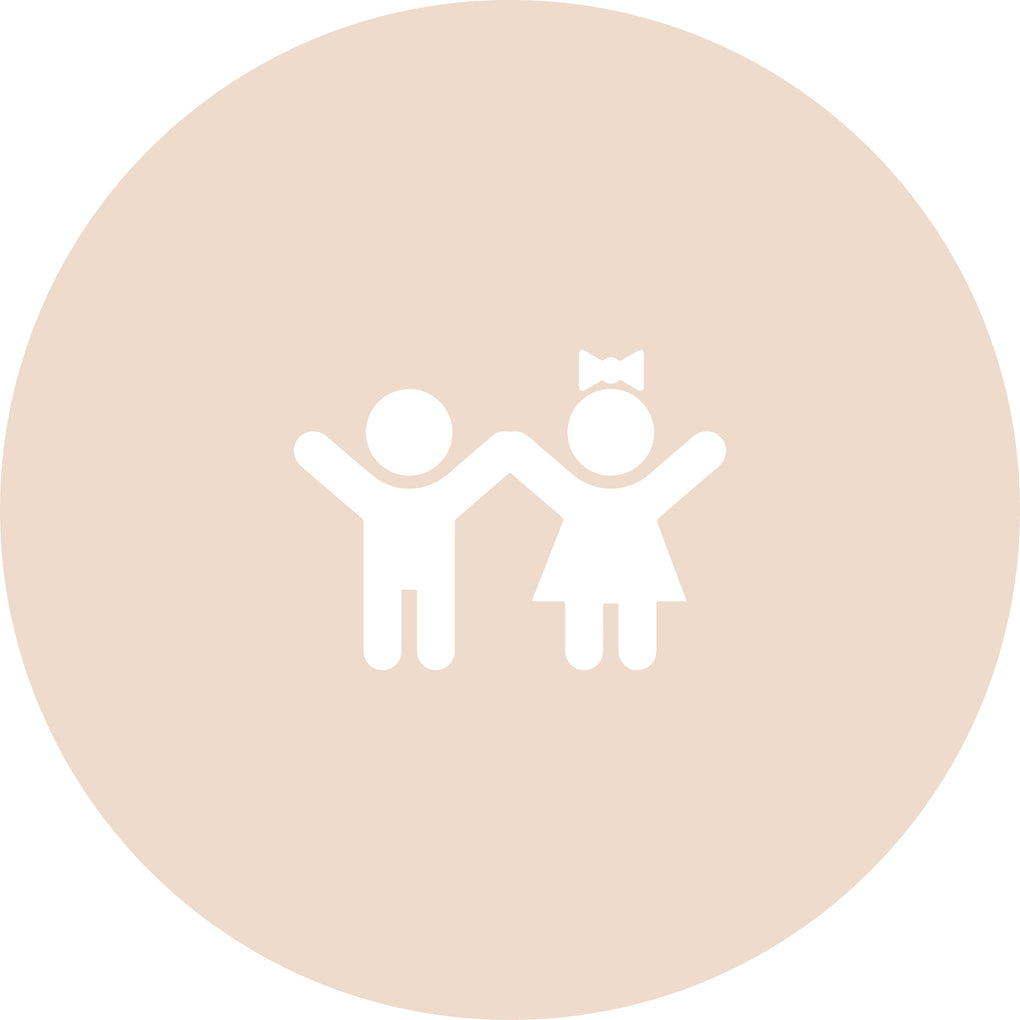The whole weaning process is an exciting adventure every parent and baby goes through, but where do you start and what food is best for your growing little one? An increasingly popular weaning style is baby-led weaning. You may have heard the phrase, but what does it actually mean and is it the best style to suit you and your baby? We’ve taken a deeper look into the world of baby-led weaning to help answer all your questions and offer you some top tips to become a weaning wizard!
What is baby-led weaning?
In traditional weaning approaches, parents offer baby their first taste of food from the tip of a spoon or on a fingertip. These are typically purees or mashed foods that take hardly any chewing or effort from your little one to consume.
Baby-led weaning however is a more relaxed and unstructured approach based on baby being offered solid food for them to feed themselves with no help from an adult or a spoon. The ethos behind baby-led weaning is that you forgo purees, and instead offer your baby a variety of foods which they can pick up and eat themselves — allowing them to decide what, how much, and how quickly to eat. Like traditional weaning, it's suitable from six months. Prior to six months, babies tend not to have developed the hand-to-eye coordination needed for baby-led weaning but every little one is different and your baby will tell you when they are ready.
It may be the case that your little one has already naturally adopted the baby-led weaning technique without even thinking about it. Often attempting to copy older siblings or Mum and Dad. They may be trying to grab food from your plate to get a taste for themselves already.
What are the benefits?
Baby-led weaning lets your little one explore a variety of tastes and textures for themselves at their own pace encouraging independence. This way of weaning means baby can join the dinner table and experiment with meals the whole family are having, instead of their own pureed version. Combining the independence with involving them in real dinner time leads to the view that they will go on to develop healthy eating habits for life.
Aside from the benefits for your little one, Mum and Dad will also benefit from this weaning technique. A lot of precious time and energy will be saved with not needing to set time aside to prepare purees or mashing up dinners for your little one to enjoy. You will simply have to adapt your own family meal to make sure it is as healthy and salt free as possible and give them their own mini portion to enjoy.
Baby-led weaning encourages involvement in family mealtimes from the start which has a positive impact on their social skills. They learn how different foods are eaten, how to share and join in conversations. Plus, it means less time spent mashing and pureeing for you!
Are there any downsides to baby-led weaning?
Baby-led weaning can be a messy business (although we say the messier the better! It's all part of the fun after all...!)
Offering your baby that independence to pick up food as they wish could result in half of it being chucked on their lap but nothing a good coverall bib can't handle! As well as the mess, this can also lead to some parents feeling like their little one hasn’t actually consumed much food or nutrients. In this case, some parents opt for a combined approach. The official advice is to give your baby mashed or pureed foods at the beginning of weaning, as well as finger food. The Department of Health, the European Union, and the World Health Organisation all recommend this. Dietitians also tend to think it's important to give your baby a variety of textures, which includes sloppy foods as well as finger foods.
Weaning is a gradual process, with this in mind, it is often favourable to start with a mix of different food (purees and finger foods) as in introduction to the world of food. As they get more confident with taste, techniques and textures, you will get more confident with what works best for your family and your little one. Whether you choose baby-led weaning, traditional methods, or a combination of the two, it's meant to be a gradual process.

How do you get started?
The best type of baby-led weaning foods are finger foods that can easily be grabbed by little hands. Think chip-shaped food or food that has a natural ‘handle’, such as cooked broccoli. Start with softer finger foods such as cooked sticks of carrot, broccoli and sweet potato, and chunks of banana, avocado and cucumber. Simply take a few of the healthy veg from your main family meal and cut them up into baby size sticks. Try not to overwhelm your baby with too many food options at the beginning. Just a couple of pieces of food, or a small portion of a family meal will be work perfectly.
At first, your baby may just play with the food, or suck on it. This is all part of the process, they need to explore the world of food and test it out. We just love their funny facial expressions as they discover their first tastes, be sure to have your camera at the ready!
In this interim make sure your baby is still getting enough nutrients either from milk or a mix of purees added in to their diet too. As your baby starts to get more confident and starts chewing and consuming more solids, slowly decrease the amount of milk or puree feeds.
Remember the whole premise of baby-led weaning is that your little one explores the exciting world of food independently. Don’t worry if your baby doesn’t like certain foods – it’s important that they explore a wide variety of foods for themselves. Try not to pick up the food for them, they will slowly learn; think of mealtimes during the early stages as playtime, when baby explores different tastes and textures and gets comfortable with different foods.

Baby-led weaning recipes
When you first start to explore the process of baby-led weaning you won’t need many ‘recipes’, most of the food you will give your little one in the early stages will be baton finger shaped toast, cooked veg (broccoli, carrot, cucumber), soft fruit (banana, softened apple, grapes), hard boiled eggs, cheese etc. Again, all of this can be based around simple adaptions of elements from your main family meal.
As a general rule of thumb, first foods should be of a size that your baby can manage. They need to be able to close their hand around the food, so avoid making the pieces too big or too small. Longer shapes tend to be easier for them to grab in their fist.

As they start to get more confident and eager to explore different food you can start to introduce more whole meals. This can be a smaller version or your own family meal or an easy recipe that you know your little one will enjoy. Just remember to keep additional salt and sugar to a minimum.
Pieces of cooked fish or roast chicken (be careful to remove all the bones), are always good transitioning food for once your baby gets more confident and is ready to move on from the plain veg and fruit batons.
Below are some of our tried and tested favourite baby-led weaning recipes that the whole family will love.
Omelette strips
Ingredients
3 eggs beaten
A teeny tiny bit of vegetable oil
Your little favourites toppings (cheese and ham, mushroom and spinach, pepper and tomato etc)
Directions
Chop up all toppings into small bite size chunks.
Add to beaten eggs
Heat the vegetable oil in frying pan and add egg mixture making sure it covers the whole base of the pan
Leave to cook for about 30 seconds. Using a spatula, ease around the edges of the omelette, then fold it over in half. When it starts to turn golden brown underneath, remove the pan from the heat and slide the omelette on to a plate.
Cut into thin strips and serve.

Fishcakes
Ingredients
750g potato
250g tinned salmon or tuna
2 tbsp fresh parsley, chopped
1 tbsp fresh dill, chopped
1 whole medium egg, beaten
1 tbsp flour
Directions
Peel and chop the potatoes into medium sized chunks. Boil the potatoes until tender then mash.
Mix in the chosen fish with the chopped parsley and dill combining well. Add some egg to help bind the mixture.
Divide the mixture into 10-12 balls and flatten down to a circle.
Lightly dust the fishcakes in the flour and shallow fry in vegetable oil until golden brown.
Move the cooked fishcakes to a plate lined with a paper towel to soak up the excess oil.
Add steamed veg and serve

Vegetable Frittata
Ingredients
2 tbsp coconut oil or butter
1 spring onions, finely chopped
100g tender-stem broccoli, finely chopped
200g button mushrooms, finely chopped
200g cherry tomatoes, quartered
10 eggs, beaten
Directions
Preheat the grill.
Melt the oil in a large, wide pan and add the onion. Cook for 3 minutes until golden. Add the broccoli, mushrooms and cherry tomatoes and cook for another 5 minutes.
Pour over the eggs, and stir well. Allow this to cook on a low heat for 8 minutes until the bottom sets, then transfer the pan to the grill for 4-5 minutes until the top is deliciously golden. Serve warm, chopped into the right size for your child.

Strawberry Swirl Frozen Yoghurt Bark
Ingredients
500g plain yoghurt
200g strawberries
Directions
Pour the 400g of the yoghurt into a baking paper lined dish.
Roughly chop the strawberries
Add half of the strawberries to a blender with the rest of the yoghurt.
Pour blobs of the strawberry and yoghurt smoothie on top of the plain yoghurt and swirl around with a tooth pick or fork.
Place the rest of the whole strawberries on top.
Freeze for four hours. Cut or break into chunks and feed to your little one for a sweet treat.

See our feeding products perfect for helping with the weaning process >>
Discover our exclusive 4 week recipe planner for baby + family here >>






















